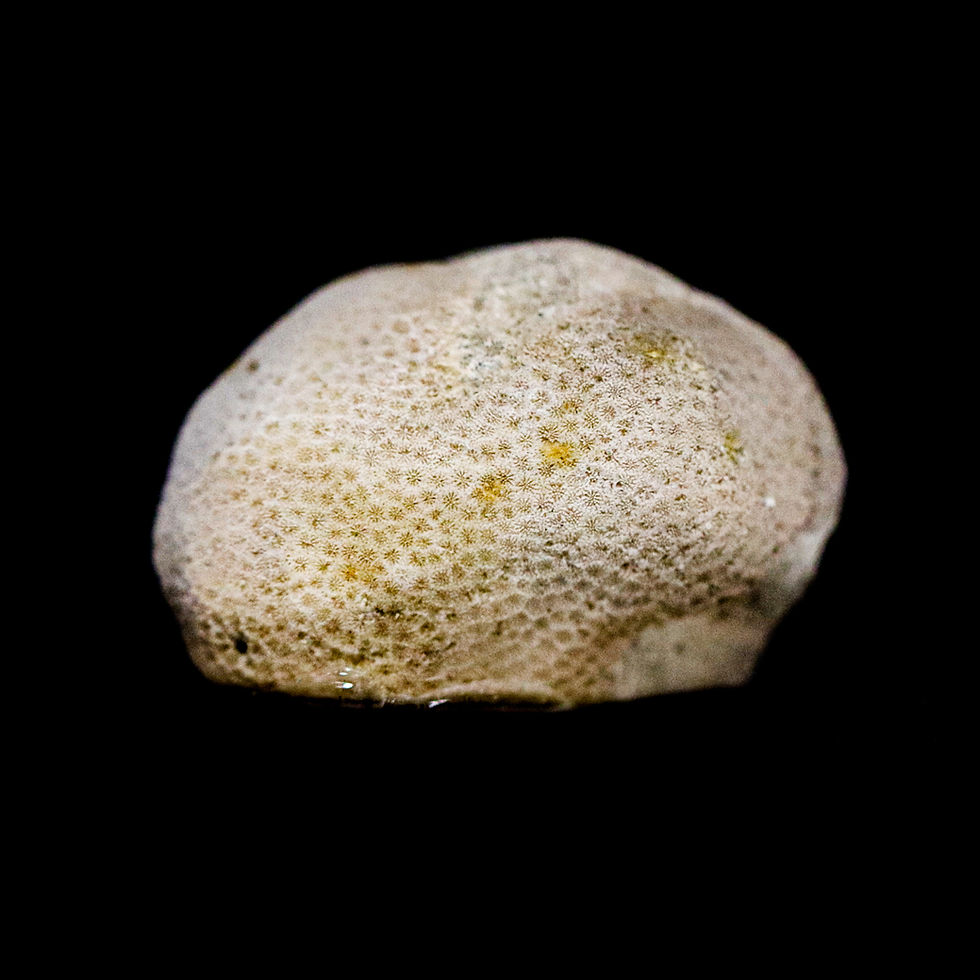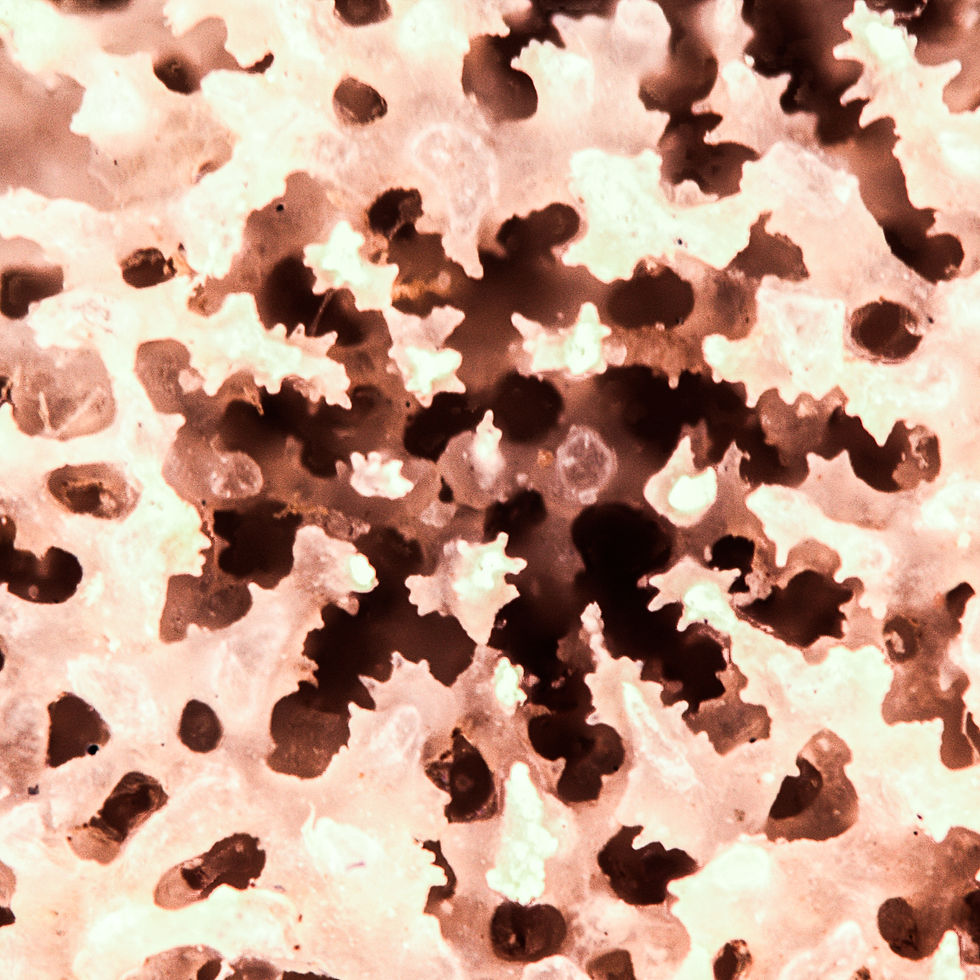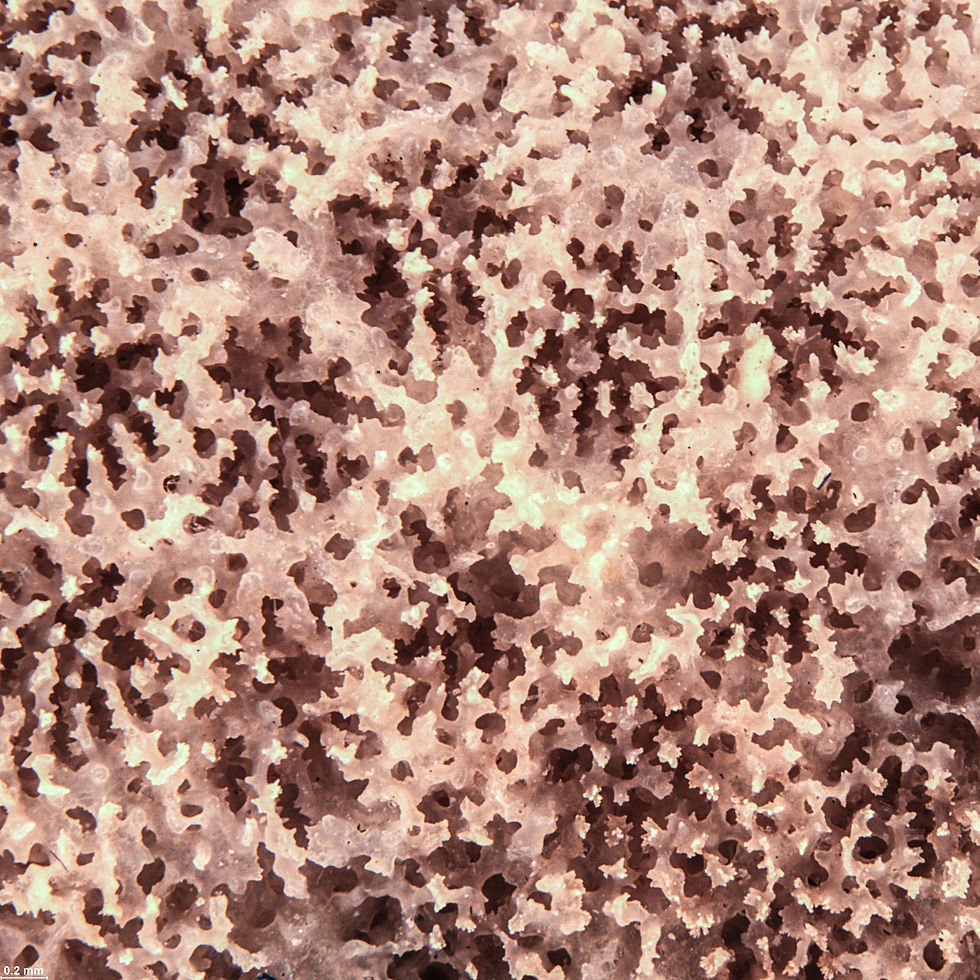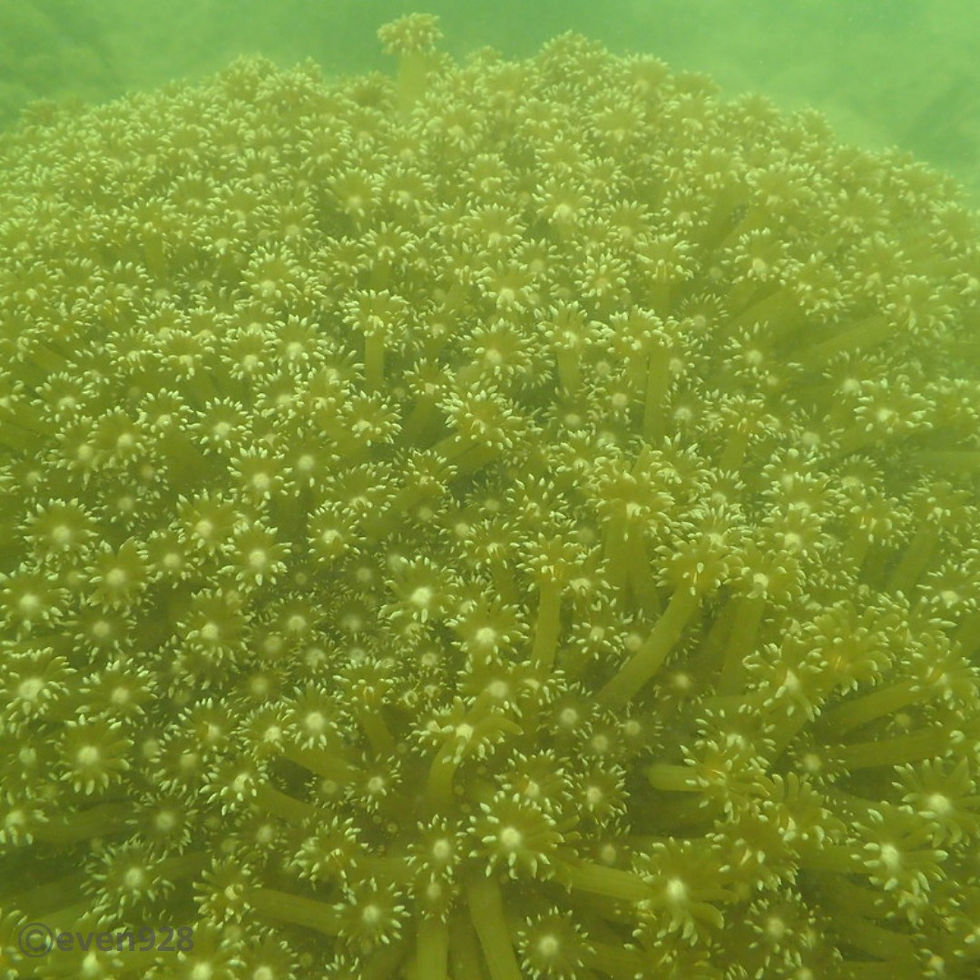The ocean at night is one of the most attractive places to wander, due to the frenzy activity of marine creatures. Sharks and most of the coral species are more active during night time, since it is their feasting time. But there are always the exceptional kids that do not go by the books, for instance, the Daisy Coral (Dana, 1846), a.k.a the hungry coral.

The Daisy Coral is one of the commonly found hard coral species in Hong Kong Marine Parks Areas. 𝐺𝑜𝑛𝑖𝑜𝑝𝑜𝑟𝑎 𝑐𝑜𝑙𝑢𝑚𝑛𝑎 in Hong Kong usually has brown and white colours and lives on soft substratum like sandy seabed. Compared to other hard coral that rely more on sunlight, 𝐺. 𝑐𝑜𝑙𝑢𝑚𝑛𝑎 can live in relatively deeper sea waters ranging from 2 to 18 m . It looks like a cheerleader pom-pom or soft broccoli underwater because its tentacles are always reaching out, making it look like a soft coral drifting along the current.

In case you do not know, corals are actually colonial organisms composed of multiple invertebrates called polyps and living with their mutualistic partners which are symbiotic algae. The symbiotic algae called zooxanthellae, which are single-cell organisms, provide essential nutrients to the polyps by undergoing photosynthesis. The algae also provide the colours that we observed in coral. So during daytime, coral absorbs nutrients generated by zooxanthellae and will only extend their tentacles during night time to search for food.

However, various species of corals might have different diets. Apparently, the nutrients provided by zooxanthellae is insufficient for the hungry Daisy coral. While most hard corals’ diet rely 40%-95% on zooxanthellae, Daisy coral relies more on heterotrophic feeding, meaning through the obtention of nutrients and energy from other organisms, such as feeding on plankton. Hence, the Daisy coral will extend its tentacles during both daytime and nighttime to obtain a maximum of nutrients. Research suggested that the growth rate of 𝐺. 𝑐𝑜𝑙𝑢𝑚𝑛𝑎 performed best when fed with food containing high animal proteins, which are unavailable from zooxanthellae. In addition, the absorption and digestion ability of 𝐺. 𝑐𝑜𝑙𝑢𝑚𝑛𝑎 is higher during daytime from 6am to 12pm than in night time, so it has to seize the chance of having a good meal during the day. That’s why even though 𝐺. 𝑐𝑜𝑙𝑢𝑚𝑛𝑎 has its personal chef, zooxanthellae, it still relentlessly reaching out for more food during daytime.

Reaching out tentacles all the time can also increase its survival rate. Daisy coral prefers living on sandy seabed, where there are rich nutrients available. But this environment also poses dangers, as sand and other lightweight materials will have a higher chance of covering the coral. But reaching out its tentacles can effectively remove unwanted materials from accumulating on its surface, and thus prevent suffocation and starvation. If you are amazed by its big stomach, do not hesitate to come check out its skeleton at the Hong Kong Biodiversity Museum!

Comentários